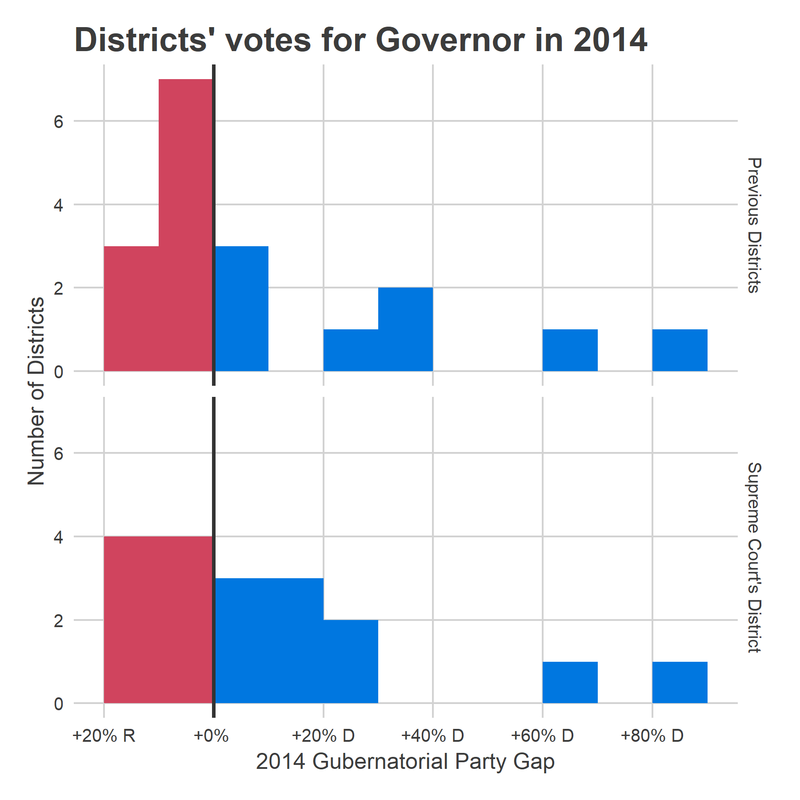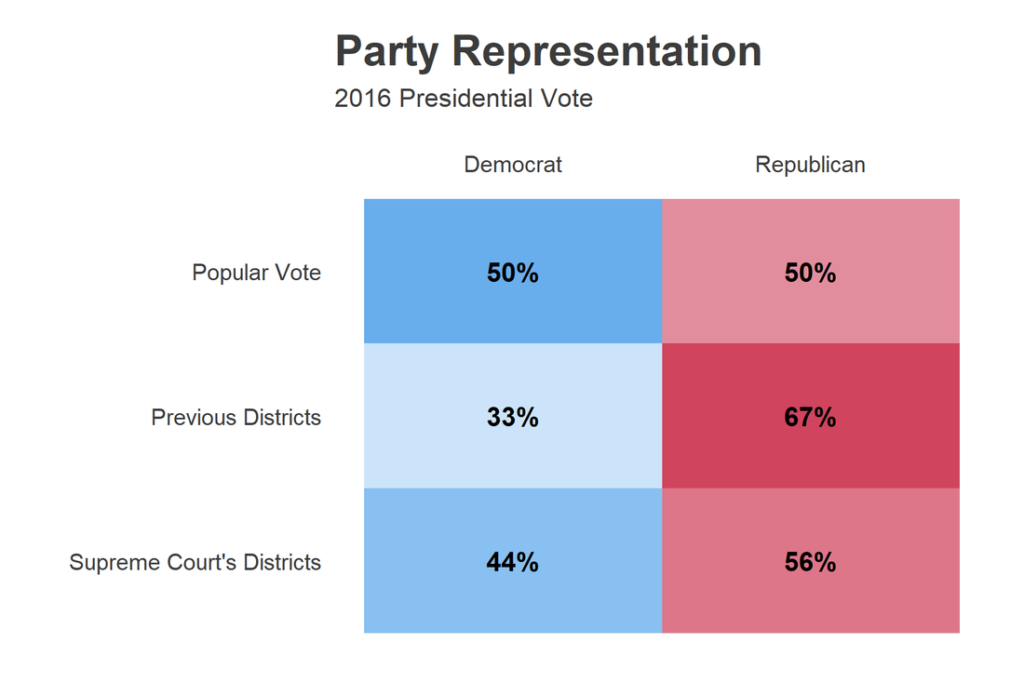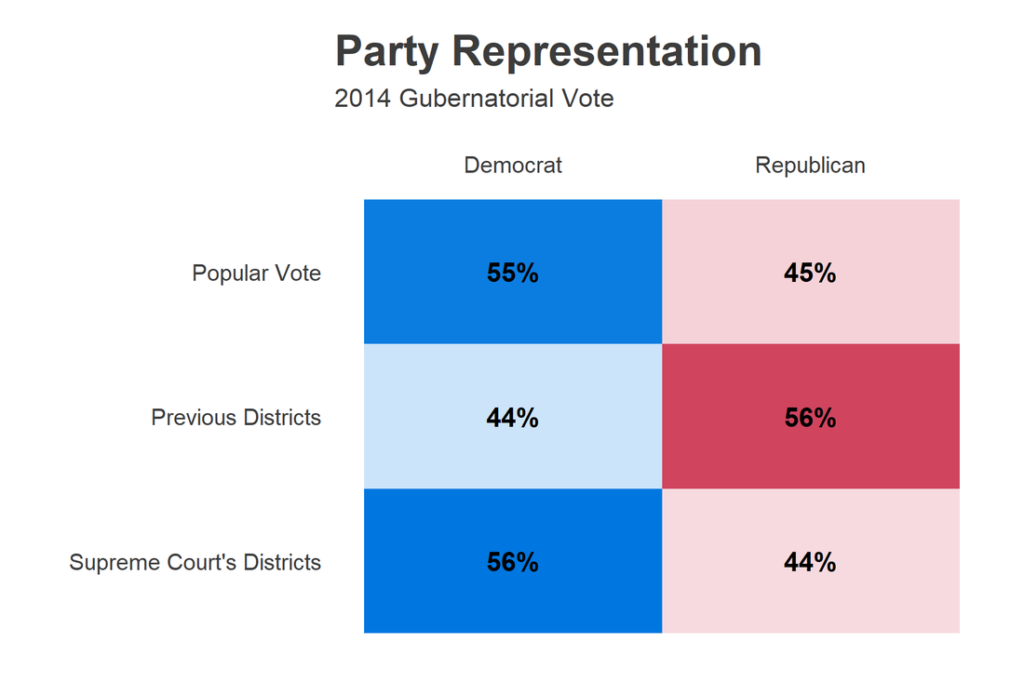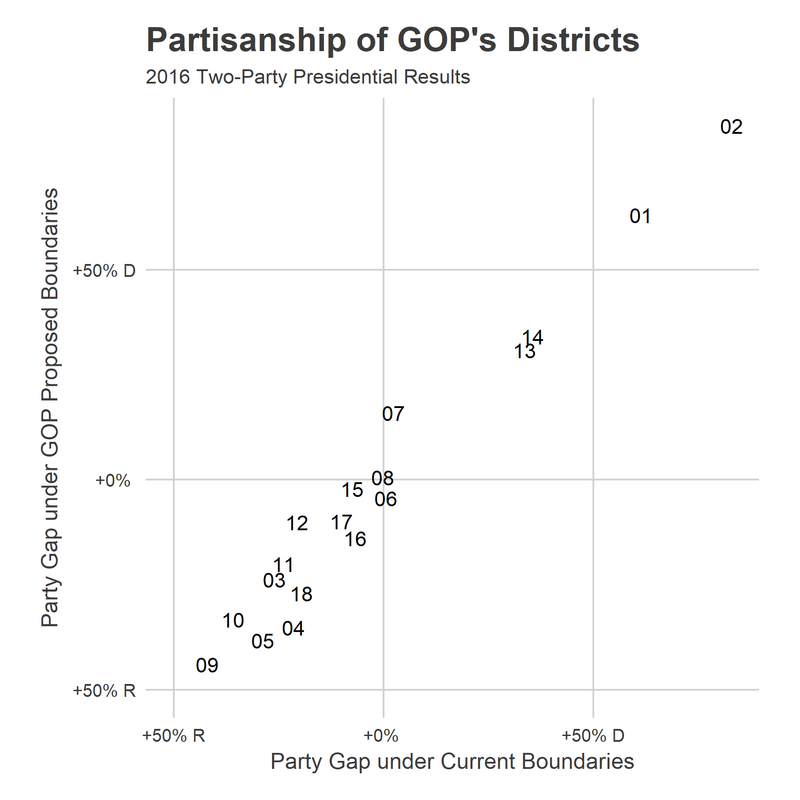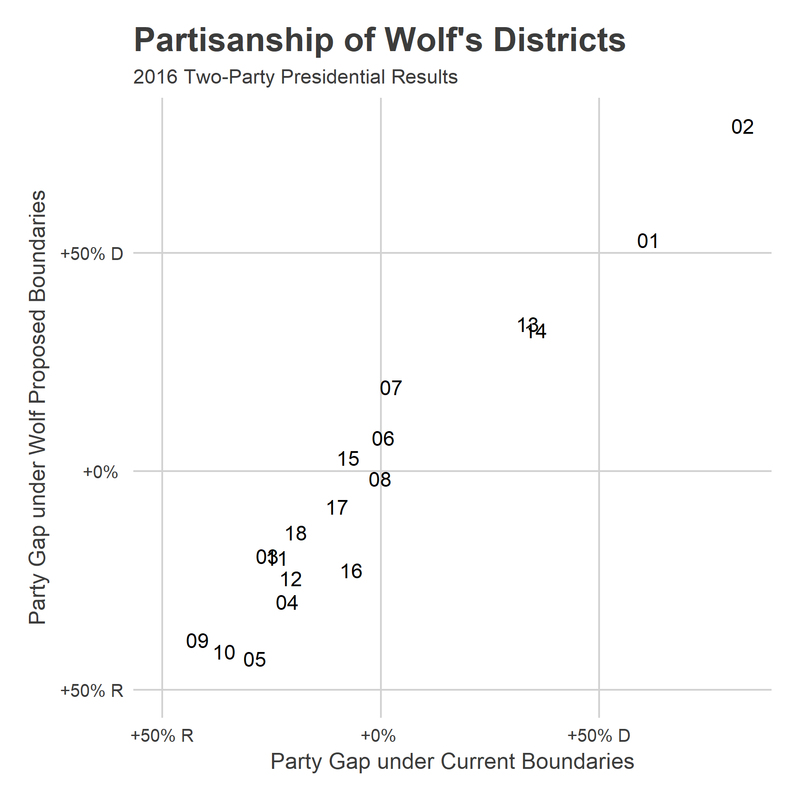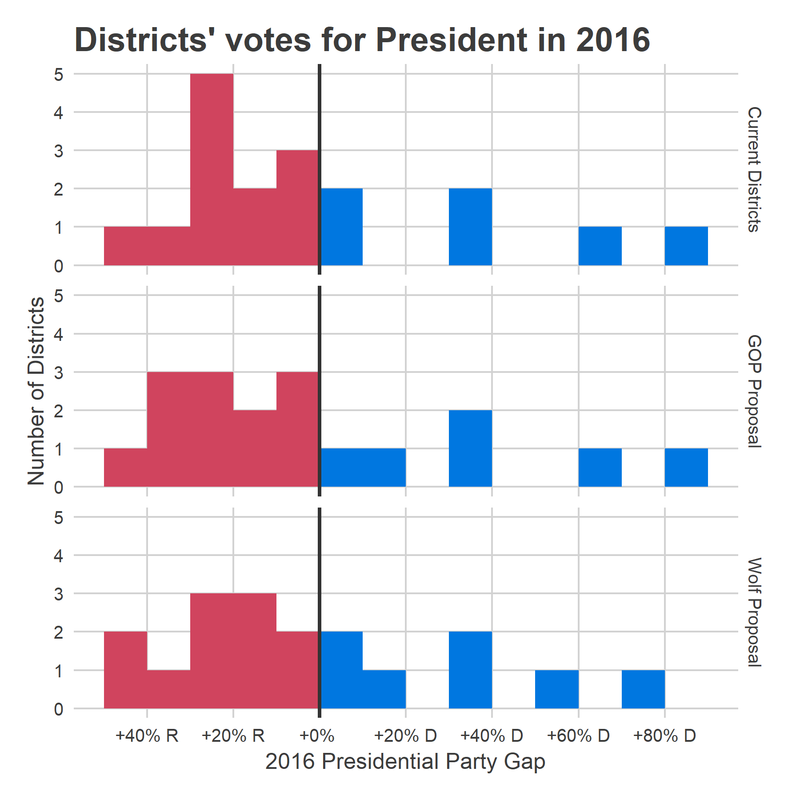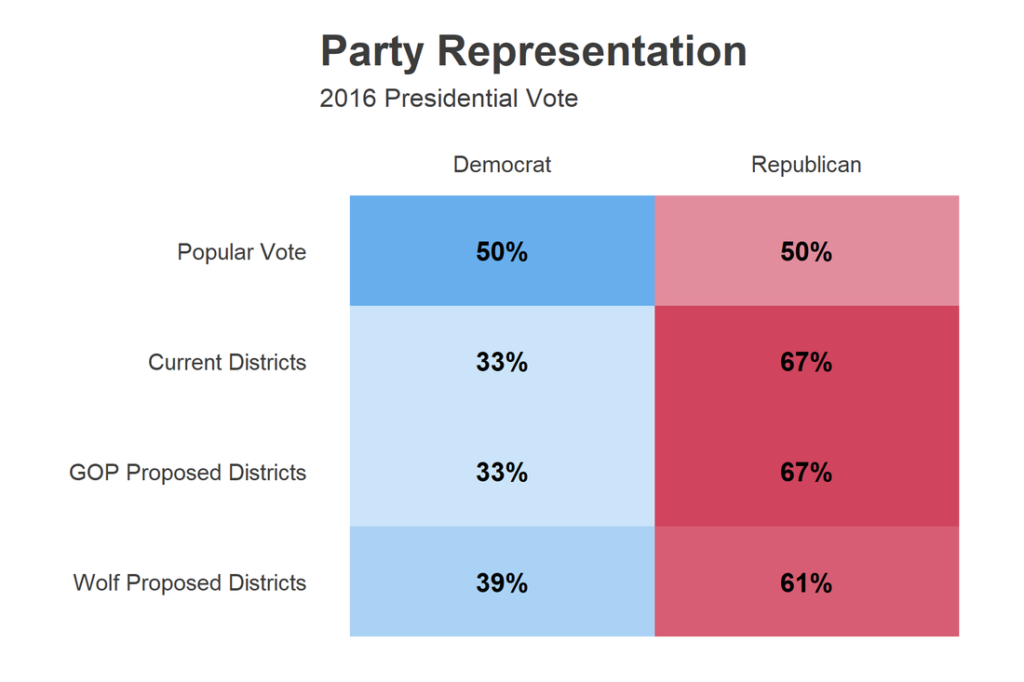The districts are compact (as were the GOP districts), but treat Philadelphia and suburbs very differently from the GOP’s map, and slightly reduces the wasted vote gap between parties.
To see how Wolf’s districts would change congressional voting, below is a plot of the current districts’ results in the 2016 Presidential Election, and what it would have been under the proposed districts.
Similar to the GOP’s map, Wolf’s largely preserves districts’ current partisanship. But there are notable exceptions.
District 6, in Delaware and Chester county voted barely for Clinton in 2016, 48.1% to 47.6%. Under the GOP’s districts, it would have been a Trump 52-48 win (I do all of my projections using only the two-party vote). Under Wolf’s districts, it would have been a Clinton 56-44 win.
Wolf’s plan also changes District 15, which covers Reading and Allentown, from Republican to Democratic. In doing so, it makes Bucks County’s District 8 more Republican; the district narrowly crosses from Blue to Red in the 2016 vote tally.
District 7, Patrick Meehan’s district that the GOP plan sacrifices, similarly becomes a Democratic stronghold under Wolf’s plan. That’s the comically gerrymandered “Goofy kicking Donald” district, and any redistricting that values compactness will almost certainly swing it hard to the left.
Wolf’s map also makes a number of Republican districts much safer. Districts 12 and 16 move from 10-point Republican wins to over 20-point wins, with only District 18 swinging from a 27-point Republican win to a 14-point win.
Overall, Wolf’s map brings districts closer to 50-50 splits. And in doing so, it moves one district from Republican to Democratic. The current map has 12 districts that voted for Trump, 6 that voted for Clinton. The GOP’s maintains the exact same split. Wolf’s map would shrink that slightly to 11-7, or 61% Republican. This in a state that voted 50-50, with Donald Trump winning by less than a percentage point.
So what are we to do? Wolf’s map may be as fair as we can expect while being tied to outdated notions of geographical representation and compactness. Maybe, some day,
proportional representation.

